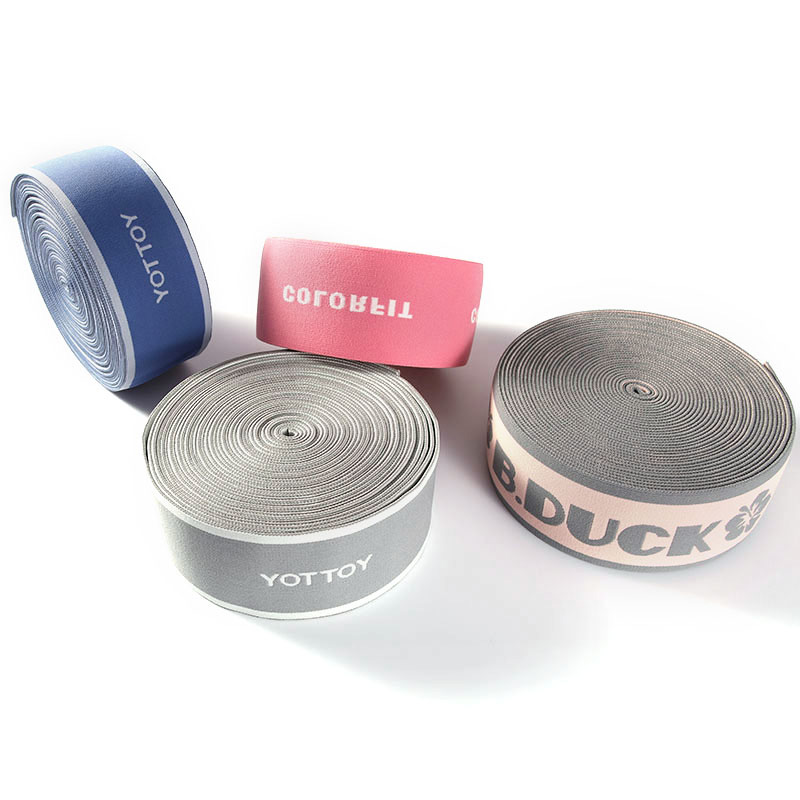Industry
 By Admin
By Admin
The Importance Of Quality Waistband Elastic In Sportswear Design
When it comes to sportswear, the choice of materials can significantly influence both performance and comfort. Among these materials, waistband elastic plays a crucial role in ensuring that garments fit well and remain comfortable during physical activities. The quality of waistband elastic directly impacts the user experience, which is why designers and manufacturers pay close attention to selecting the right type of elastic for sportswear applications.
Waistband elastic must balance stretchability with strength. It needs to be flexible enough to accommodate various body movements but durable enough to retain its shape after repeated use. Poor quality elastic can lose its elasticity quickly, pilot to discomfort and the need for frequent replacements. This is why sportswear designers often seek elastic that offers reliable performance without compromising on comfort. In many cases, a strong elastic strap is preferred in waistbands because it provides that sturdy hold necessary for activewear without digging into the skin.

Beyond waistbands, elastic is also used in other parts of sportswear, such as cuffs, hems, and even face coverings. For example, face mask elastic straps have become an essential component in recent times, especially for sports enthusiasts who wear masks while training. These elastic straps must be soft yet resilient, providing a secure fit without causing irritation during extended wear. Designers often look for elastic materials that can serve multiple functions across different types of sports gear, making versatility a key consideration.
One particular variety that has gained attention is satin strap elastic. This type of elastic combines softness with a smooth finish, making it suitable for sportswear pieces that require gentle contact with the skin. Satin strap elastic is often used in yoga pants, sports bras, and other apparel where comfort is a priority. Its texture reduces friction, which helps prevent chafing—a common issue during intense workouts. Using satin strap elastic in waistbands ensures that the elastic feels good against the skin while maintaining its stretch and recovery capabilities.
Choosing the right waistband elastic is not just about comfort; it also affects the garment's overall look and durability. A strong elastic strap ensures the waistband stays in place even during vigorous movement, which is crucial for athletes and active individuals. Additionally, it helps maintain the garment's shape over time, preventing sagging or loosening. This stability contributes to the longevity of sportswear, reducing the need for frequent replacement and supporting sustainable use.
Face mask elastic straps, while not part of traditional sportswear, have influenced material choices in the industry. The pandemic highlighted the need for elastic materials that could withstand repeated stretching and maintain comfort against sensitive skin. These lessons have crossed over to sportswear design, encouraging the use of elastic bands that are both durable and skin-friendly. The demand for elastic materials that can serve multiple functions has increased interest in innovations such as satin strap elastic, which offers a combination of strength and softness.
Incorporating high-quality elastic into sportswear requires careful consideration of manufacturing techniques as well. The way elastic is sewn or integrated into garments affects how it performs during use. A strong elastic strap needs proper stitching to ensure it does not detach or lose tension. Similarly, the choice of elastic width and thickness influences how the waistband fits and feels. Wider elastics often provide better support, but they must also be lightweight to avoid adding unnecessary bulk.
Sportswear brands and designers must also consider the environmental impact of elastic materials. Many manufacturers are exploring options that are recyclable or made from sustainable fibers. Satin strap elastic, for example, can be produced using eco-friendly processes, aligning with growing consumer interest in responsible fashion. Similarly, sourcing strong elastic straps made from recycled materials is becoming more common, which supports a reduced environmental footprint.
Using the right waistband elastic can also improve the overall aesthetics of sportswear. Elastic bands come in various colors, patterns, and finishes, allowing designers to add visual interest to their collections. Satin strap elastic is especially favored for its sleek, shiny surface, which enhances the look of waistbands without compromising comfort. Face mask elastic straps, though simpler in appearance, have inspired designers to pay attention to subtle details that combine function with style.
In conclusion, quality waistband elastic plays an essential role in sportswear design. It influences fit, comfort, durability, and even style. A strong elastic strap ensures reliable support and longevity, while a satin strap elastic adds a touch of softness and elegance. The lessons learned from materials like face mask elastic straps have expanded the possibilities for elastic use in activewear, emphasizing the importance of comfort without sacrificing strength. By carefully selecting and integrating elastic materials, sportswear designers can create garments that meet the demands of active lifestyles while maintaining a focus on wearability and sustainability.



 English
English Español
Español عربى
عربى Tiếng Việt
Tiếng Việt

